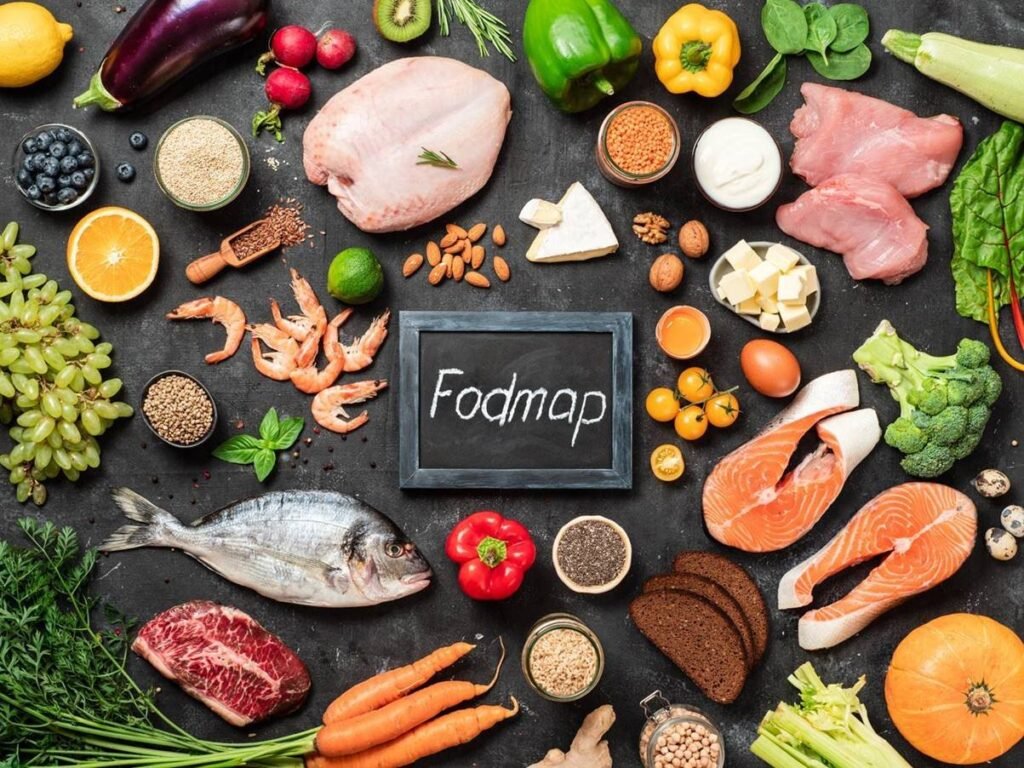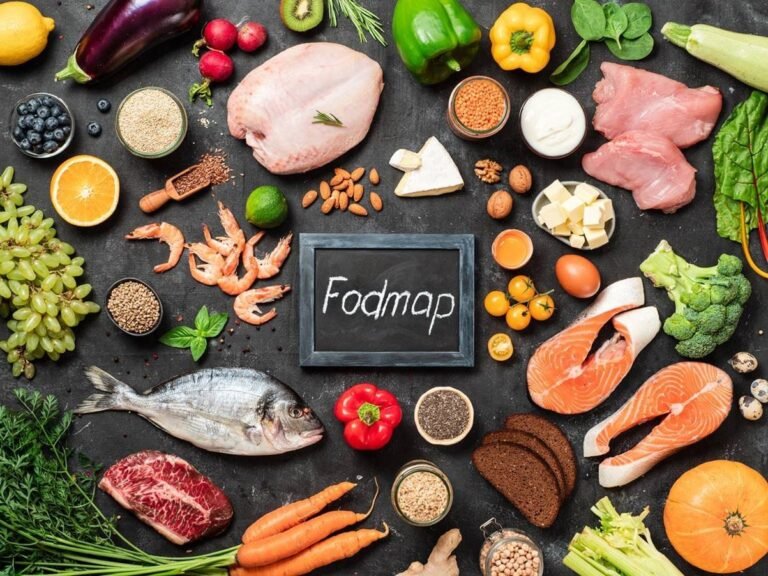Introduction
FODMAP is a term derived from the abbreviation of Fermentable Oligosaccharides, Disaccharides, Monosaccharides, and Polyols. It represents a collection of short-chain carbohydrates and sugar alcohols that are present in specific types of foods. For some individuals, consuming FODMAPs can trigger digestive discomfort, bloating, gas, and other gastrointestinal symptoms. In this comprehensive guide, we delve into the world of FODMAPs, understanding what they are, their impact on digestive health, and how to navigate a low FODMAP diet for relief and improved well-being.
Understanding the Basics
FODMAPs are a diverse group of carbohydrates and sugar alcohols that may not be fully absorbed in the small intestine. Instead, they travel to the large intestine, where gut bacteria ferment them, leading to gas production and potential digestive discomfort. These include various types, such as fructans, lactose, fructose, galacto-oligosaccharides, and polyols.
Understanding the role of FODMAPs in digestive sensitivities is essential for those experiencing uncomfortable symptoms after eating certain foods. Identifying and managing FODMAP intake can significantly improve overall digestive wellness. A low FODMAP diet is not a lifetime restriction but a helpful tool to determine which foods are better tolerated.
What Does FODMAP Stand For?
FODMAP stands for Fermentable Oligosaccharides, Disaccharides, Monosaccharides, and Polyols. Let’s examine each element in more detail:
– Fermentable: FODMAPs are fermented by gut bacteria, leading to gas production and bloating in susceptible individuals. Not everyone is sensitive to all FODMAPs, making it crucial to identify individual triggers.
– Oligosaccharides: These are short-chain carbohydrates found in foods like wheat, rye, onions, and garlic. Some individuals might tolerate small amounts of these foods while experiencing symptoms with larger quantities.
– Disaccharides: Lactose, a disaccharide, is found in dairy products and may trigger digestive discomfort in lactose-intolerant individuals. Lactose-free dairy options can be suitable alternatives for those with lactose sensitivity.
– Monosaccharides: Fructose, a monosaccharide found in fruits and honey, can be problematic for some individuals. Choosing fruits with a balanced glucose-to-fructose ratio can reduce fructose-related symptoms.
– Polyols: Sugar alcohols like sorbitol and mannitol are often used as artificial sweeteners and can cause gastrointestinal issues. Checking ingredient labels for sugar alcohols is essential, as they are present in many sugar-free products.
Understanding the components of this diet helps identify trigger foods and tailor a suitable dietary plan to each individual’s unique needs.

Low FODMAP Vegetables: Nourishing Choices
For individuals following a low FODMAP diet, certain vegetables are better tolerated than others. Low FODMAP vegetable options include carrots, zucchini, bell peppers, spinach, kale, and cucumbers. These nutrient-rich choices provide essential vitamins and minerals without exacerbating digestive symptoms.
Avoiding high FODMAP vegetables like onions, garlic, cauliflower, and mushrooms is essential for those sensitive to this diet. Fortunately, numerous delicious low FODMAP vegetables offer a diverse range of culinary possibilities. For instance, roasted carrots and zucchini make a delightful side dish, while spinach and kale can be used in hearty salads.
When selecting vegetables, be mindful of portion sizes, as large servings of low FODMAP vegetables can still contribute to symptoms. Enjoying a variety of colorful vegetables ensures a well-rounded, nourishing diet.
High FODMAP Foods: Understanding Potential Triggers
High FODMAP foods can vary depending on individual sensitivities, but some common culprits include certain fruits like apples, pears, and watermelons, dairy products containing lactose, wheat-based products, and foods with added sugar alcohols.
For individuals experiencing digestive discomfort, identifying and limiting high FODMAP foods can alleviate symptoms significantly. An elimination diet under the guidance of a healthcare professional can help identify specific triggers and better manage dietary choices.
It is essential to keep in mind that individual tolerances to FODMAPs can vary, and some people might tolerate small amounts of certain high FODMAP foods without experiencing significant symptoms. Experimentation and personalized guidance are essential for success on a low FODMAP journey.
Embracing a Low FODMAP Diet: What Can You Eat?
A low FODMAP diet includes the process of removing high FODMAP foods from the diet and gradually reintroducing them later to identify potential triggers. Safe low FODMAP options include various fruits like bananas, blueberries, and oranges; lactose-free dairy products; gluten-free grains like rice and quinoa; and sweeteners like maple syrup and stevia.
Creating balanced and delicious meals on a low FODMAP diet is achievable with careful planning. A typical breakfast could include lactose-free yogurt topped with blueberries and a sprinkle of granola made from oats, pumpkin seeds, and maple syrup. For lunch, a quinoa salad with spinach, bell peppers, and grilled chicken, dressed with a low FODMAP vinaigrette, offers a satisfying option. Dinner could consist of grilled salmon served with roasted carrots, zucchini, and a side of jasmine rice.
Foods to enjoy on a low FODMAP diet are delicious and versatile, allowing for the creation of satisfying and gut-friendly meals.
What Not to Eat on a FODMAP Diet: Avoiding Triggers
While on this diet, it’s essential to steer clear of high FODMAP foods. These include wheat and products containing wheat, garlic, onions, certain legumes, high lactose dairy products, and sweeteners like sorbitol and mannitol.
Knowing what to avoid is vital for effective symptom management and preventing discomfort. Identifying hidden sources of FODMAPs in packaged foods is essential for success on a low FODMAP diet. Reading labels carefully and opting for whole, unprocessed foods can reduce the risk of inadvertently consuming high FODMAP ingredients.
It is important to note that not all foods within a particular FODMAP category will necessarily trigger symptoms. For example, while some individuals may experience discomfort after consuming onions, others might tolerate small amounts without adverse effects.
Tips for Success: Navigating the Low FODMAP Journey
Successfully navigating this diet requires careful planning and mindful eating. Keeping a food diary, seeking support from a registered dietitian, and exploring new recipes are beneficial strategies.
Experimenting with this diet reintroduction can help identify personal triggers and tailor the diet for better symptom management. Remember that individual tolerances to Fermentable Oligosaccharides, Disaccharides, Monosaccharides, and Polyols can vary, and a customized approach is essential.
Maintaining a positive mindset throughout the low Fermentable Oligosaccharides, Disaccharides, Monosaccharides, and Polyols journey is crucial. Adopting a curious and exploratory attitude towards food can make the experience more enjoyable. While certain foods may need to be avoided temporarily, it is essential to focus on the wide array of delicious and nourishing low FODMAP options available.
Conclusion
Understanding Fermentable Oligosaccharides, Disaccharides, Monosaccharides, and Polyols and their impact on digestive health empowers individuals to make informed dietary choices. A low FODMAP diet can provide relief from gastrointestinal discomfort, allowing individuals to enjoy a diverse and satisfying range of foods while supporting overall well-being. Consulting a healthcare professional or registered dietitian is crucial for personalized guidance and to ensure a balanced and nourishing diet while managing its sensitivities. With knowledge and self-awareness, embracing a low FODMAP lifestyle can lead to a happier and healthier digestive journey.
You can learn here about Homemade Remedies for Stomach Cramps




















